Eremophilas
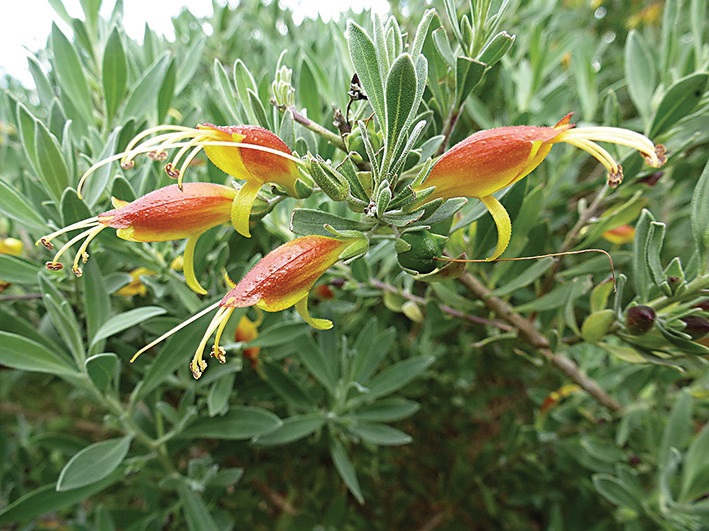
Author: David Hockings
Published: Journal March 2021
(This talk was given at an SGAP Qld. Region Meeting in 1983, but it is just as relevant today as it was then.)
The Eremophilas are a very beautiful and interesting group of shrubs and small trees in the family Myoporaceae. They are confined to the arid and semi-arid parts of Australia. Some species are variously called Fuchsia Bush, Wild Fuchsia, Turkey Bush and so on.
The Eremophilas include a very wide range of flower colour, varying from colourless to white to green, yellows, purples, reds, blues and everything between. Vegetatively the plants vary from some that creep or run along the ground, small and large shrubs, to a few that form small trees. Eremophila oppositifolia, for instance, may reach 6 or 7 metres in height.
With this wide colour range and vegetative variation, the horticultural potential of Eremophilas is tremendous, particularly for inland gardens where suitable ornamentals are scarce. They are adapted to heat and drought and difficult soils and where poor quality bore water, unsuitable for irrigation, is the only water available. They should, once established in a good season, survive droughts with few or no applications of water. On the coast, so far, the experience with all but a few species has not been good and we may need to graft onto a different root stock which is more tolerant of our coastal soils – but more on grafting later.
Somewhat arbitrarily I divide the Eremophilas into three groups – the species that occur on flood plains where they are occasionally inundated with flood water, species such as Eremophila maculata, E. polyclada and some forms of E. glabra – the sandhill species such as E. bowmanii, E. sturtii and E. willsii – and the species from stony clay ridges such as E. freelingii, E. latrobei and E. dalyana.
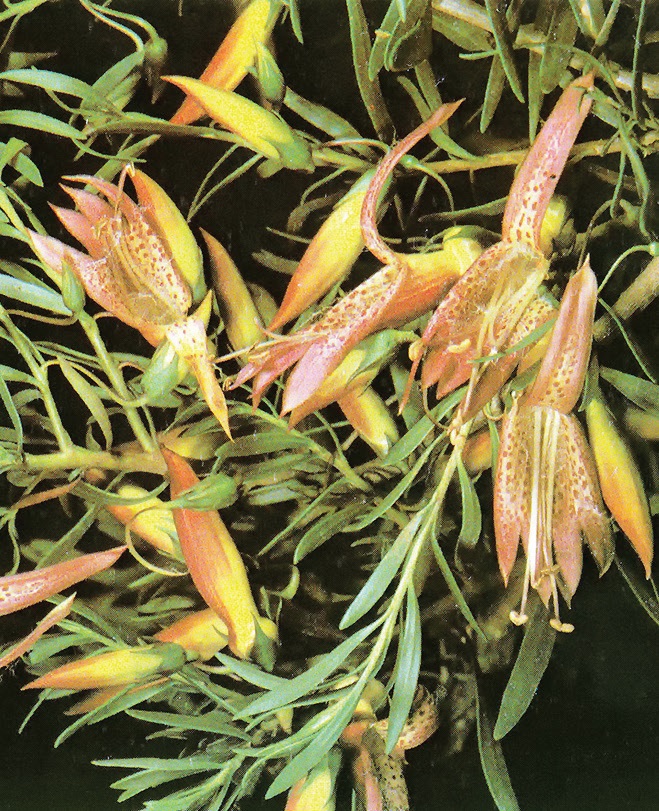
Eremophila maculata
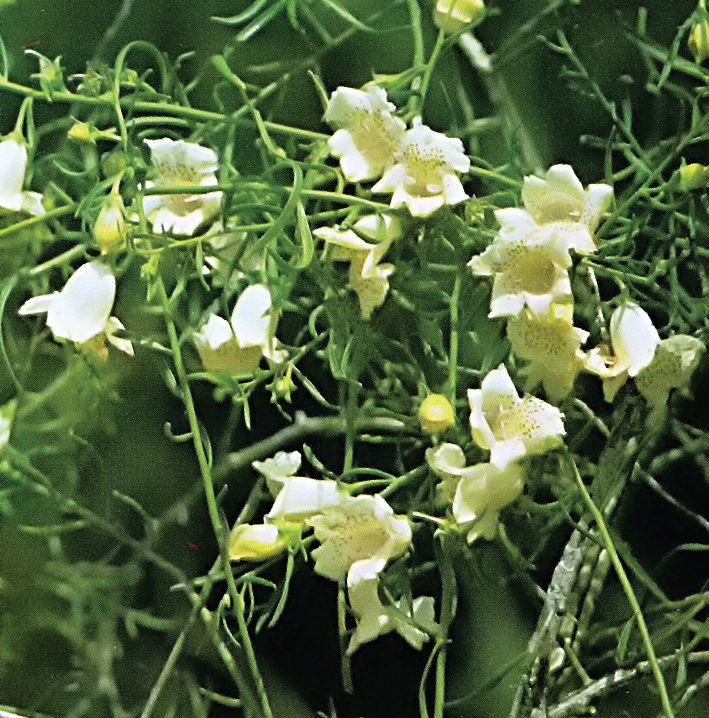
Eremophila polyclada
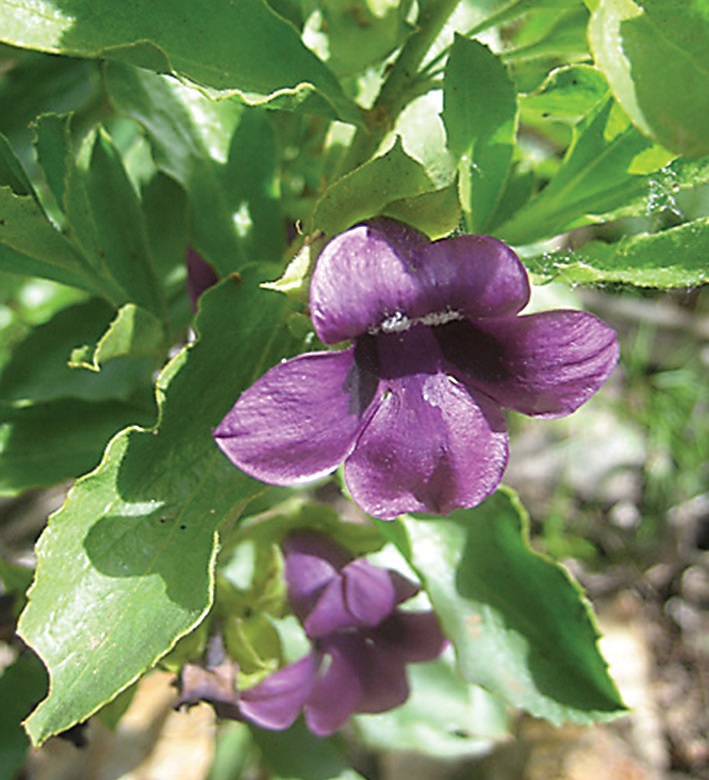
Eremophila willsii

Eremophila glabra, Photo Geoff Derrin
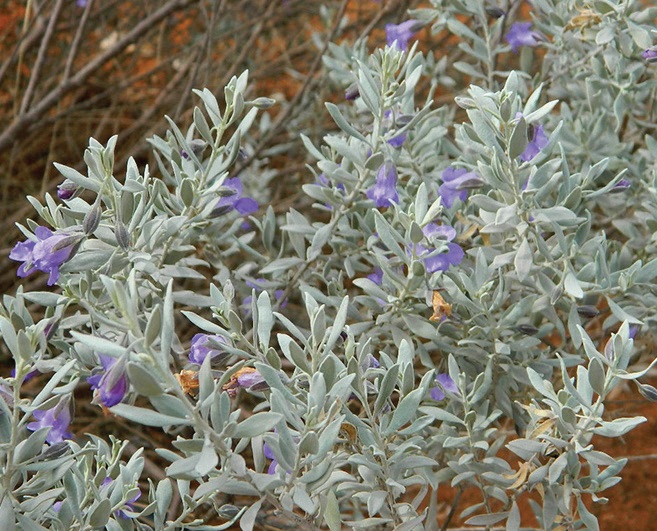
Eremophila bowmanii ssp latifolia
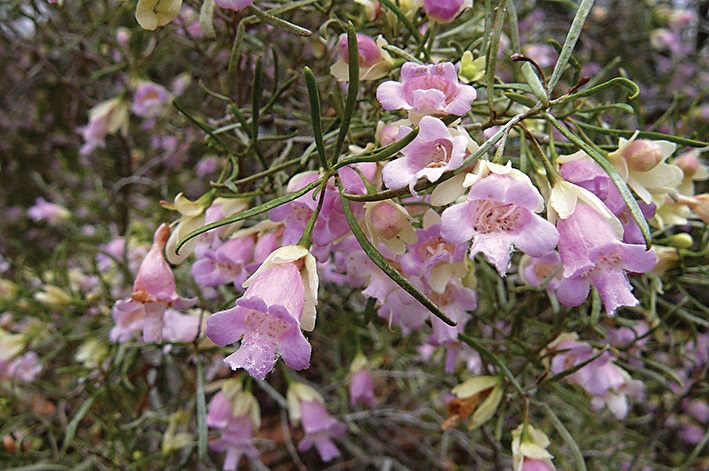
Eremophila sturtii flowers
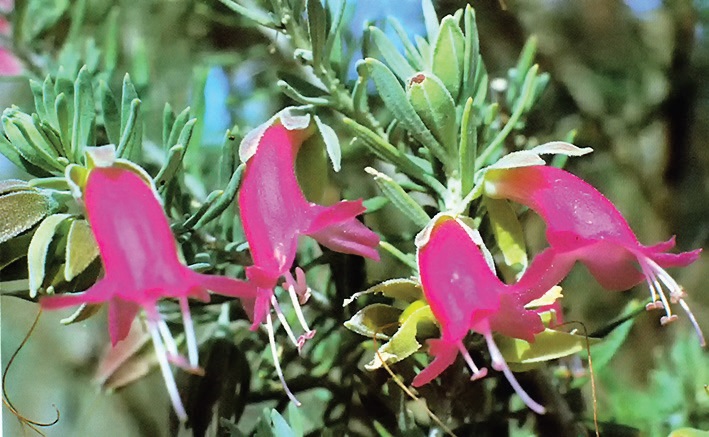
Eremophila latrobei. Photo APS SA
In general the first group from the flood plains are the easiest to grow, certainly here on the coast. For cultural experience we have to look to Dave Gordon’s ‘Myall Park’, Glenmorgan, where a large range of species from various parts of Australia has been and many still are grown. Some species regenerated there from seed quite readily under suitable conditions.
‘Brookvale Park’ near Oakey has also had a good collection in the past, but they suffered from neglect.
The towns of Dalby and Oakey in years past featured median planting that included many E. polyclada and E. maculata. They appeared to be very successful and showy, but for reasons I have been unable to ascertain, seem to have been largely removed now.
The Eremophila Study Group is also very active with much of the work being done in South Australia and they have recorded a wealth of information.
Some years ago, on a few occasions, I sent back cuttings of Eremophilas to nurserymen here in Brisbane and one of the nurserymen had great success raising to bucket size several hundred plants of a small range of Eremophilas. They were grown in a soil-less mix fed by a nutrient solution and they flourished and flowered continuously. Although customers to the nursery admired the plants, they were unknown and unwanted and were eventually dumped. I rescued some which were distributed to SGAP members and any plants that were planted out in the ground were dead in a very short time.
It is not surprising they grow well on a nutrient solution because where many species grow the soil is fertile – all it lacks is water. Why did they fail in Brisbane gardens? Probably two reasons – lack of light and lack of soil drainage with its accompanying populations of fungal disease-causing organisms. Where the Eremophilas grow, most get sun from horizon to horizon and a problem for Eremophilas, and in fact a number of native plants, is that most home gardens are too shady or have too short a day of direct sunlight. Incidentally, I believe Bob Heidemann at Stafford had E. maculata and E. glabra about 12 years old growing on the open northern side of his home.
Drainage
Soil drainage is a serious problem – too many people think drainage is the slope of the land, but it is not. Slope has nothing to do with soil drainage. Water that soaks into the ground moves downwards until it meets an impervious layer and then has to drain away sideways.
In a shallow soil such as the average Brisbane and coastal soils, water quickly banks up and saturates to the surface. In a normal wet season shallow soils may seep water for days or weeks. Depth of top soil is the governing factor in soil drainage – water can keep moving downwards out of reach of roots where there is a deep friable topsoil.
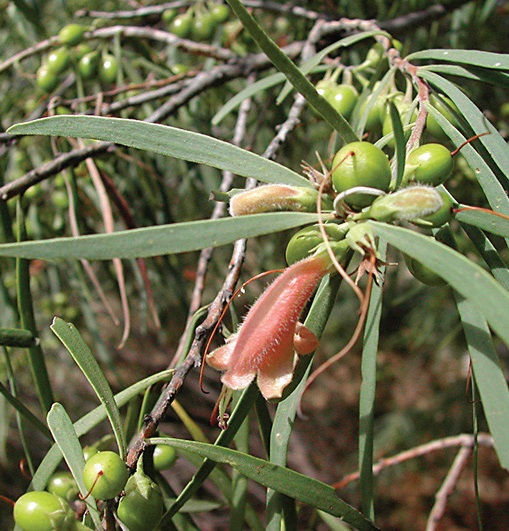
Eremophila longifolia seed
Propagation
On the subject of propagation we would have to conside seeds, cuttings and grafting.
Seeds:
Seeds of Eremophilas are notoriously difficult to germinate, apparently having several inbuilt dormancy mechanisms. One story is that the seed must pass through an emu or turkey before it will germinate. I think it is much more difficult than that. The fruit has a thin fleshy outer covering, a hard inner stone and Eremophila longifolia seed probably chemical inhibitors that need to weather or leach away, as well as temperature requirements.
Some research on germinating of E. gilesii, which is a pest in the Charleville district, indicated that seed which had weathered in the soil and baked in the sun for 2 or 3 or more years germinated on winter rainfall – not summer rain. There is room for someone to try soaking and refrigeration or refrigeration and soaking prior to planting to see if it brings about germination.
Cuttings:
Cuttings are not difficult if the material is satisfactory. The difficulty is more in transporting dry land material to the propagator in time. It is much easier to strike cuttings off garden grown plants. The sticky leafed species seem harder to strike from cuttings, but perhaps it is because the material tends to drop all leaves in transport.
Grafting:
Grafting shows much promise and in this field the late Harvey Shaw was clearly the leader. Harvey used approach grafting with three species of Myoporum as root stock – M. montanum, M. acuminatum and M. insularis. Grafted plants seem to grow away well and, although it is early days yet, we can look forward to seeing how those plants perform, particularly here in Brisbane.
Seeds of Eremophilas are notoriously difficult to germinate, apparently having several inbuilt dormancy mechanisms. One story is that the seed must pass through an emu or turkey before it will germinate. I think it is much more difficult than that. The fruit has a thin fleshy outer covering, a hard inner stone and Eremophila longifolia seed probably chemical inhibitors that need to weather or leach away, as well as temperature requirements.
Some research on germinating of E. gilesii, which is a pest in the Charleville district, indicated that seed which had weathered in the soil and baked in the sun for 2 or 3 or more years germinated on winter rainfall – not summer rain. There is room for someone to try soaking and refrigeration or refrigeration and soaking prior to planting to see if it brings about germination.
Cuttings:
Cuttings are not difficult if the material is satisfactory. The difficulty is more in transporting dry land material to the propagator in time. It is much easier to strike cuttings off garden grown plants. The sticky leafed species seem harder to strike from cuttings, but perhaps it is because the material tends to drop all leaves in transport.
Grafting:
Grafting shows much promise and in this field the late Harvey Shaw was clearly the leader. Harvey used approach grafting with three species of Myoporum as root stock – M. montanum, M. acuminatum and M. insularis. Grafted plants seem to grow away well and, although it is early days yet, we can look forward to seeing how those plants perform, particularly here in Brisbane.
